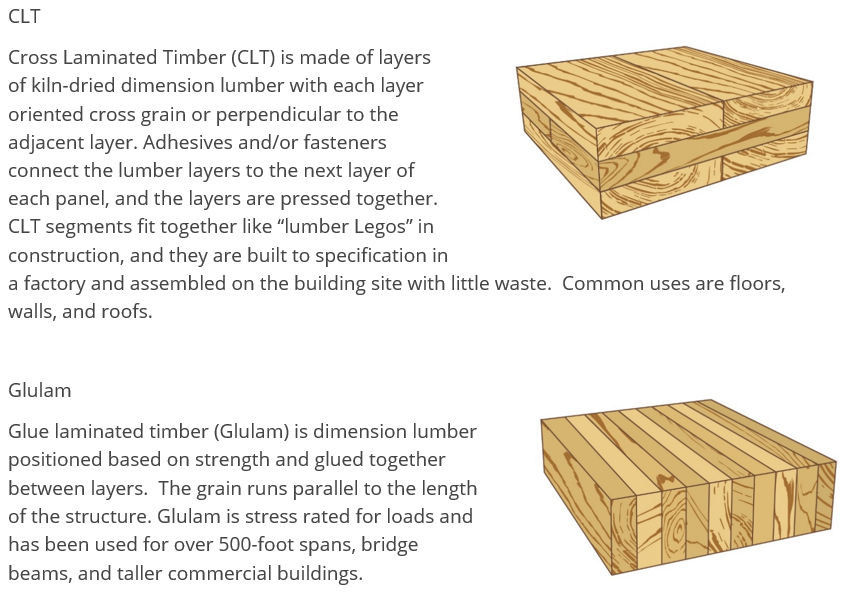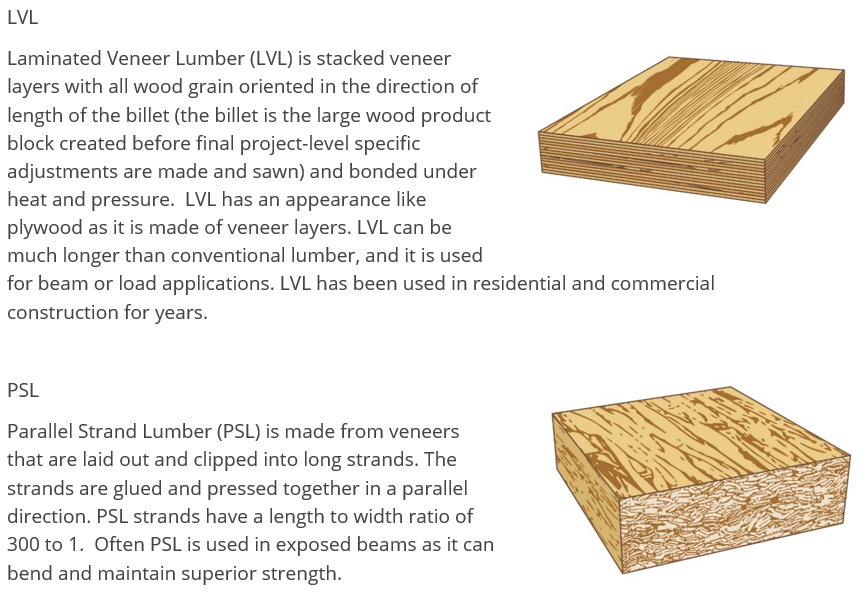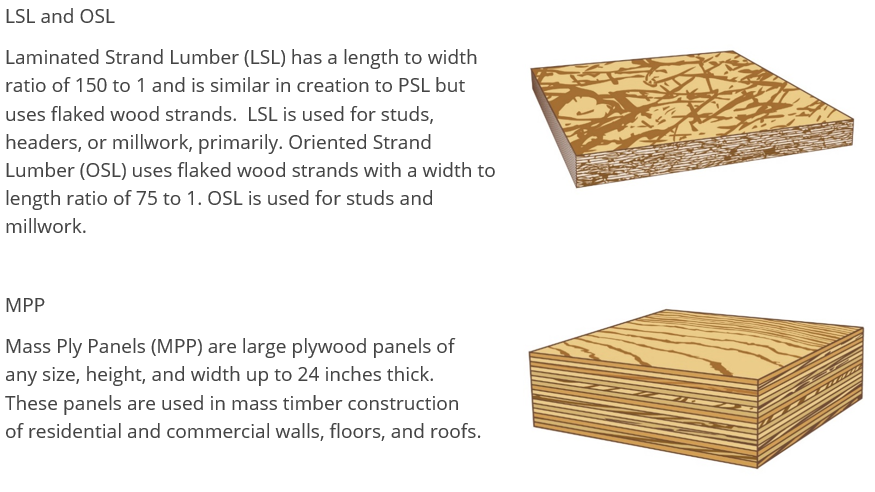This post is the third in a series related to the Q2 2022 Forisk Research Quarterly (FRQ), which includes forest industry analysis, timber price forecasts, and featured research on regional pulpwood price dynamics. Below is an excerpt from the lumber industry coverage related to mass timber products.
As the world becomes more focused on carbon storage and sustainability to reduce carbon emissions, builders, architects, and the forest products industry in North America are interested in mass timber as a building product. Many articles have been written by mainstream news outlets, including the Wall Street Journal, featuring large stunning wood buildings with massive exposed twisting beams and seemingly suspended staircases. Mass timber includes layered wood products bonded together for enhanced strength to make load bearing structural panels, posts, and beams for construction of buildings, bridges, and arches. This blog is a primer for mass timber product definitions and common uses.
Mass Timber Primer



Pat Jolley, Forisk Forest Industry Analyst & Consultant, co-authored the research in this blog post. All product photos in this post are courtesy of naturallywood.com.
The Forisk Research Quarterly publishes analysis of the lumber sector in North America and capital investment trends. To produce custom reports and maps, check out Forisk’s North American Forest Industry Capacity Database. Discounted rates available for companies that also subscribe to the Forisk Research Quarterly (FRQ). The Forisk Market Bulletin (FMB) provides market intelligence and tracking for U.S. and Canadian forest industry capital investments and timberland transactions. Email hsclark@forisk.com or call 770.725.8447 for pricing information and to place an order.

Thank you, Amanda. This post is most informative. Most descriptions of “Mass Timber” I have read or heard simply state it is an engineered structural wood product. This definition is true but unhelpful and essentially useless.